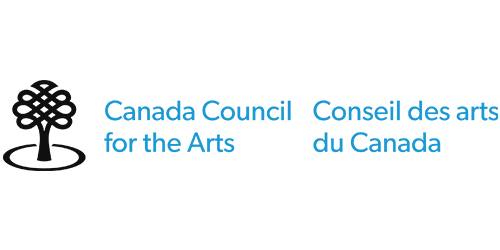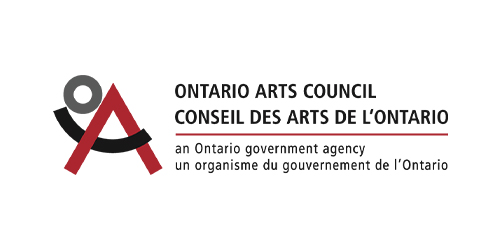Filmed at live concerts March 3 & 4
at Jeanne Lamon Hall, Trinity-St. Paul’s Centre
Francesco Corti, guest director & harpsichord soloist
Program
| Johann Sebastian Bach 1685–1750 | Concerto for harpsichord in D Minor, BWV 1052 Allegro – Adagio – Allegro |
| J.S. Bach | Orchestral Suite no. 1 in C Major, BWV 1066 Ouverture – Courante – Gavotte I & II – Forlane – Menuet I & II – Bourée I & II – Passepied I & II |
| J.S. Bach | Concerto for harpsichord in D Major, TWV 1054 Allegro – Adagio – Allegro |
| Johann Adolph Hasse 1699–1783 | Sinfonia in G Minor, op. 5, no. 6 Allegro – Andante – Allegro |
| Jan Dismas Zelenka 1679–1745 | Orchestral Suite in F Major, ZWV 188 Ouverture – Aria: Andante – Menuetto I & II – Siciliano: Andante ma non troppo – Folia: Allegro |
Tafelmusik Baroque Orchestra
Violin I Cristina Zacharias (leader), Geneviève Gilardeau, Christopher Verrette
Violin II Patricia Ahern, Chloe Fedor, Julia Wedman
Viola Brandon Chui, Patrick G. Jordan
Violoncello Keiran Campbell, Matt Zucker
Contrabass Pippa Macmillan
Oboe John Abberger, Gaia Saetermore-Howard
Bassoon Dominic Teresi
Harpsichord Francesco Corti, Charlotte Nediger
Program Notes
by Charlotte Nediger
The exact contents of Bach’s personal library of manuscripts and published editions of music remain elusive. No catalogue was drawn up, and the contents—which undoubtedly varied from year to year—appear to have been largely distributed to family members and colleagues before his death. Although a list of books he owned was listed in his estate, the music was not. The shelves would obviously have held copies of many of his own works, but his library shelves would have also contained the works of many other composers, and relatively few of those can be named with absolute certainty. His son recounted a list of some of the composers whom Bach “esteemed highly”: Fux, Caldara, Handel, Kaiser, Hasse, both brothers Graun, Telemann, Zelenka, Benda. He made arrangements of works by Vivaldi, Albinoni, Steffani, among many others, and it is assumed to be Bach who assembled the invaluable Alt-Bachisches Archive, a collection of music by his forbears.
This week’s program imagines music that Bach might have pulled from his library shelves to assemble a program for one of the countless concerts he curated as Director of the Leipzig Collegium Musicum. The Collegium is described by the German polymath Lorenz Christoph Mizler in his Neu eröffnete musikalische Bibliothek of 1736:
Announcement of the Musical Concerts at Leipzig
Both the public musical Concerts or Assemblies that are held here weekly are still flourishing steadily. The one is conducted by Mr. Johann Sebastian Bach, Kapellmeister to the Court of Weissenfels and Musik-Direktor at the Thomas-Kirche and Nicolai-Kirche in this city, and is held, except during the Fair, once a week in Zimmerman’s Coffee House in the Catherin-Strasse, on Friday evenings from 8 to 10 o’clock; during the Fair, however, twice a week, on Tuesdays and Fridays at the same hour. The other is conducted by Mr. Johann Gottlieb Görner, Musik-Direktor at the Pauliner-Kirche and Organist at the Thomas-Kirche …
The participants in these musical concerts are chiefly students here, and there are always good musicians among them, so that sometimes they become, as is known, famous virtuosos. Any musician is permitted to make himself publicly heard at these musical concerts, and most often, too, there are such listeners as know how to judge the qualities of an able musician.
Collegia such as those described above sprang up all over Germany during the 17th and early 18th centuries. The two Leipzig collegia were particularly active, and the “Bachische Collegium” was described in Johann Heinrich Zedler’s 1739 Universal Lexicon as “more famous than all others.” Leipzig was one of Germany’s most prosperous and most cosmopolitan centres. Its economy was based on commercial trade and manufacturing, and although it fell under the jurisdiction of the Elector of Saxony in Dresden, its affairs were governed by the town council, an elected group of citizens. The council, rather than a monarch or bishop, ruled on all aspects of city life. The city’s three annual trade fairs, called Messe, gave Leipzig its cosmopolitan flair. Merchants came from far and wide to sell their wares alongside local merchants, setting up booths in the arcades that distinguished the city’s architecture. A festival atmosphere prevailed, and the wealthy Leipzigers made sure that they were seen in the latest of fashions, leading to the epithet “Klein-Paris” (Little Paris).
These same Leipzigers would have attended the Friday night concerts at Zimmerman’s Coffee House, although, as Mizler suggests, they would probably have been joined by ardent music-lovers from perhaps less fashionable circles. Zimmerman’s Coffee House consisted of two adjoining rooms on the ground floor of a four-and-a-half-storey building built in 1715 in the centre of town: one room was approximately 26’ x 32’, the other approximately 18’ x 32’.
In this intimate and congenial atmosphere the Collegium performed orchestral suites, concertos, chamber music, and secular cantatas. Bach was Director of the Collegium from 1729 to 1737, and again from 1739 to 1741 or later. No programs from Zimmerman’s have survived, but this week’s concerts offer a taste of what such an evening might have included.
Bach is often credited with the “invention” of the keyboard concerto. Its genesis is to be found in the Fifth Brandenburg Concerto, with its impressive solo harpsichord part, composed in Cöthen in 1721. But where this genre flourished was at the Leipzig Collegium concerts. Not only was Bach a remarkable harpsichordist, but so too were his many pupils, notably his sons Wilhelm Friedemann and Carl Philipp Emanuel. Harpsichord music would have played a prominent role at Zimmerman’s on many a Friday night, and certainly Bach’s many concertos for one, two, three, or even four harpsichords were composed for the Collegium. The seven concertos for solo harpsichord (plus a fragment of an eighth) survive in a single manuscript score in Bach’s hand.
Most of the harpsichord concertos were transcriptions, by Bach, of works he had composed earlier for violin. An exception is the imposing Concerto in D Minor, whose origins are to be found in Bach cantatas in which organ is featured as a solo instrument. The first two movements are transcriptions of the sinfonia and opening chorus of Cantata 146, “Wir müssen durch viel Trübsal.” The original organ and string parts of the chorus are essentially unchanged, and the haunting chorale sung by the choir simply omitted. The last movement is a transcription of the sinfonia to Cantata 188, “Ich habe meine Zuversicht.”
It is possible that the inauguration of a new harpsichord in 1733 may have inspired this most impassioned and virtuosic of the solo concertos. The Leipzig press advertised the instrument “such as had not been heard here before, and lovers of music as well as virtuosos are expected to be present.” Francesco Corti has chosen to pair it with the uplifting Concerto in D Major, a transcription by Bach of his E-Major Concerto for violin. The characteristic violin figurations remain with little alteration, and the lyricism of the slow movement challenges the player to spin the beautiful melodies without the aid of a bow, instead creating a mirage of legato on an instrument that relies solely on a plucking mechanism.
You can listen to the original versions (for organ and violin respectively) of these two harpsichord concertos here:
Between the two concertos on the concert we perform Bach’s Orchestral Suite in C Major, scored for oboes, bassoon, and strings. The exquisite dance movements show how completely Bach mastered the styles of the French courtly dances, as evidenced also in his keyboard suites. Only one non-French movement appears, that being the Italian Forlana, an energetic dance that was immensely popular in Venice at that time. The dances are preceded by a grand overture, and throughout the suite the three wind players take centre stage.
Johann Adolph Hasse arrived in Dresden as Music Director in 1731, accompanied by his wife, the renowned soprano Faustina Bordoni. His opera Cleofide was premiered at court a few months later. In attendance was J.S. Bach, who was in town to perform a much applauded organ recital at the Sophienkirche. Bach is thought to have taken his son Wilhelm Friedemann to the opera, reportedly “to hear the pretty Dresden tunes.” Bach and Hasse became friends, and Hasse and Bordoni are known to have visited him in Leipzig on numerous occasions. Whether Hasse gave Bach a copy of his six string sinfonias is not known, but seems plausible.
Bach reportedly had a particularly close friendship with the Dresden court composer Jan Dismas Zelenka, originally from Bohemia. Zelenka is known to have shared many scores with Bach, including music from Dresden circles which Bach may have otherwise had difficulty accessing. We know that Bach directed at least one Zelenka choral work (the Magnificat in D Major) in Leipzig, and must have known of Zelenka’s instrumental music. It’s easy to imagine the two composers discussing counterpoint, which pervades both their music, over a beer during one of Bach’s Dresden visits. It’s also easy to imagine Bach smiling at Zelenka’s exuberant, at times quirky, Orchestral Suite in F Major.
Thank You to our Generous Donors
Tafelmusik is deeply grateful to our generous donors who have continued to support us through this challenging time. Your support has inspired us to remain strong and to deliver joy to our community through our music, and will enable us to persevere until we can once again perform live for you, our cherished patrons. Thank you for believing in Tafelmusik and in the power and beauty of music.
If you would like to make a gift, please click here or contact us at donations@tafelmusik.org.
Thank you to our government sponsors



